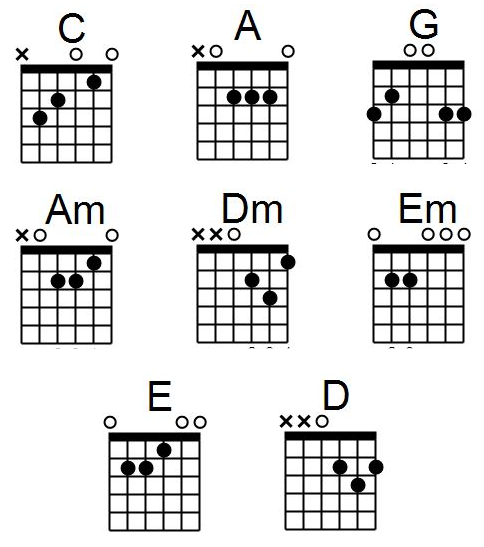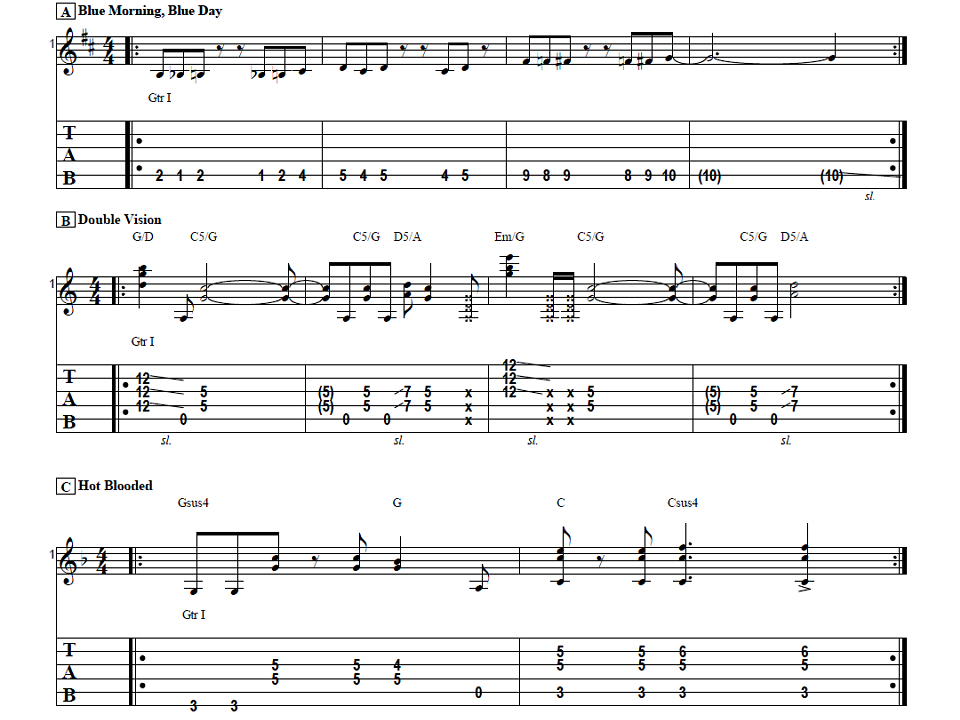Check out beginner guitarists need to know these chords guitar lesson from Guitar Control instructor Darrin Goodman. Be sure to click the link to get your free chord chart to go along with this guitar chord lesson.
[contentwall]

[/contentwall][ninja-popup ID=715]
Guitar Chords Overview
Hey everybody how’s it going? This is Darrin with guitarcontrol.com bringing you this video guitar lesson and today I got something for all you beginners out there. I’m going to go over basic beginner guitarists chords. These are like the essential chords that you want to get under your belt right away so that way you can start playing songs. These are just some really simple chords that there’s just hundreds of songs that you can play if you just know these chords. So be sure to click on the link down below so that way you can get the chord charts and stuff for this lesson. Anyway let’s get close up and take a look at the basic beginner guitarists chords that we’re gonna be going over.
The Chords
So the very first basic beginner guitarist’s chords we’re gonna look at is E minor. Now there are a couple of ways that we can do this chord. So traditionally it’s done like this so I’ve got my second finger on the second fret of the fifth/A string and I’ve got my third finger on the second fret of the fourth/D string and all of the rest of the strings are just open, that’s E minor. So it’s traditionally done this way because the other guitar chord that we want to do is also an E and it’s E major. So simply all you have to do when you’re doing it this way is just take your first finger and place it on the first fret of the third/G string and you have E major. So just by taking that one finger off you can switch from E major to E minor.
Now an alternative way to do this guitar chord is instead of using your second and third fingers is to use your first and second fingers so your first finger will be on the second fret of your fifth string and your second finger will be on the second fret of your fourth string. Now the reason why this is an alternative way to do it is for transitioning into other chords and stuff and we’ll look at a little of that in a minute. All right so that’s two guitar chords we have E major and E minor. Now we’re going to take a look at C major. So for C major we’ve got our first finger on the first fret of the second/B string my second finger on the second fret of the fourth string which is your D string and my third finger on the third fret of the fifth string which is the A string and we strum all the strings except your low E.
All right now another basic beginner guitarists chords that we want to look at is A minor. A simple way that we can transition from C major to A minor is we just simply move our third finger from where it is now on the third fret of the fifth string and we’re going to move it up so now we’re on the second fret of the third string, that’s A minor. So that’s a pretty common chord transition is to go between those two chords and what’s nice is you only have to move your single finger to do it. Okay so now let’s take a look at G major. Now this one there is a couple of ways that we can do this one as well, so the way that i typically do it is like this. So I’ve got my second finger on the third fret of the low E/6th string, my first finger on the second fret of the fifth/A string and my third finger on the third fret of the second/B string and my fourth finger on the third fret of the high E/first string and then the other strings are just open. So you can play it that way and an alternative way is to actually play the second string open so you can still use your fourth finger on the high E or you can use your third finger, either way is still technically G major, the difference here is there’s three notes that make up the chord, these guitar chords are what they call a triad, so they have three notes. So the three notes that make up a G major chord are the notes G, B and D. So if I’m fretting the third fret here on my second string that’s giving me a D, but if I play it open it’s giving me a B. So when we play it this way with just three fingers we’re getting two B’s and we are getting three G’s but if we play it this way we’re getting more D’s than we are B’s, so since the D is the fifth. If you count up you know you’ve got G, A, B, C, and D is five. So the more ones and fives you have together it just has a heavier fuller sound and this is just the way that I like it, but either way is fine.
You will find some songs where you can distinctly hear that they’re playing it one way or the other, but that’s something that you’ll kind of figure out as you get experience you start making those adjustments. Okay so what have we got over here we’ve gone over G major, E minor, E major, A minor, C major now let’s take a look at D major. So for D major we’re not playing the the low E or the A strings. We’re playing the D string your open, we’re on the second fret of the G string with your first finger, third fret of the second string with your third finger and the second fret of your high E with your second finger. So that is your D major, now let’s look at D minor, another fairly common basic beginner guitarists chords. What we’re going to do is the note that’s on the second the first string second fret is going to move from the second fret to the first fret but the other two notes are going to stay the same. So what we’re going to do is we’re going to put our second finger where our first finger is now so we’re going to move it to the second fret of the G string and then we’re going to take our first finger and move it to the first fret of the high E string and still just play strings one two, three and four and that is your D minor. Now we have A major. This one there are a couple of different ways that we can play this basic beginner guitarists chords. So traditionally if you you look on chord charts and stuff traditionally it’s played like this. So what it is that we’ve got our fifth string open and then we’re fretting the second fret of the fourth, third and second strings and then the first string is open. So you can fret all three of those by putting your first, second and third finger all cramped in there like that or your second, third and fourth finger like that, but the way i like to play it is just by barring my first finger across the second fret of the fourth, third and second strings. So if you’re a beginner that might be more difficult for you to do, so if you have to you can play this way until you’re getting better at this. So when you play it with one finger one of the problems that most people have, I used to have this problem but over time I eventually got past it. So originally when i played this chord I had issues so when you’re barring I’m playing the fifth, fourth and then when I get to the first string my finger couldn’t clear to be able to get that string open. So that’s actually okay because like I said a minute ago there’s only three notes that make up these basic beginner guitarists chords. So the three notes that make up an A major chord a major are A, C sharp and an E, so by not playing the first string, if it’s just muted, that’s an E but you’re still getting the E here on your fourth string, so it’s still okay.
There are every once in a while a song where the first string being open is actually a critical part of the song, so until you get it open like that then you can just use your other fingers, but as a general rule it’s just so much easier to transition when you are just using your first finger like that, it’s just you know much easier than trying to cram all of your other fingers in there. Alright, so we’ve got E major, E minor, C major, A minor, G major, D major and D minor.
Guitar Chord Variations
Here is a variation on basic beginner guitarists chords. Now earlier I was talking about how E minor sometimes you’re going to want to play it with your first and second finger instead of your second and third. So in this case it would be like, let’s say you were going from E minor to G major, which is a really common transition. You’ll see in like lots and lots of songs if we’re playing it this way when we go to switch to the G major we have to move all of our fingers but when we use this way with our first and second finger our first finger is already where it needs to be for a G major. So we have E minor and then the G major, by not having to remove this finger so anytime you can make a chord transition without having to remove all of your fingers if you can leave one finger planted it’s just it makes it much easier to make the the changes smoothly and to prevent you from like getting into the wrong area. It’s not always going to work that way. There’s just some guitar chords, you know if you’re going from C major to G major which is a common transition too, even though you know we’re close to having our fingers on notes that are in that chord, we’re not so you just have to move all of them like that and it’s just what it just takes practice and time to get that down.
All right so there we have it the basic beginner guitarists chords that you need to play songs. Anyway that’s all I have for you today so thanks for watching and have a great day.



